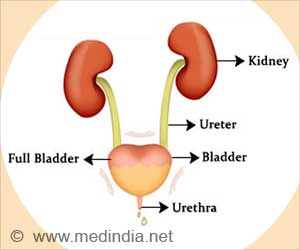Levels of prostatic intraepithelial neoplasia (PIN) could allow for a more precise prognosis for prostate cancer, suggests study published in Cancer Epidemiology, Biomarkers & Prevention.

Even after accounting for age, Gleason score, year of diagnosis, inflammation and type of focal atrophy present, PIN still managed to independently predict the lethality of a given tumor. There was also a suggestion that the degree of chronic inflammation adjacent to the tumor could predict lethal outcome.
"Identifying features surrounding the tumor that can predict prognosis, such as the presence of PIN or inflammation, can improve our understanding of the biology of aggressive prostate cancer and help to guide clinical decision-making," said Rider.
The study was funded by the United States Department of Defense, the National Institutes of Health, the Prostate Cancer Foundation and the Swedish Cancer Society.
Source-Newswise









![Prostate Specific Antigen [PSA] Prostate Specific Antigen [PSA]](https://www.medindia.net/images/common/patientinfo/120_100/prostate-specific-antigen.jpg)





